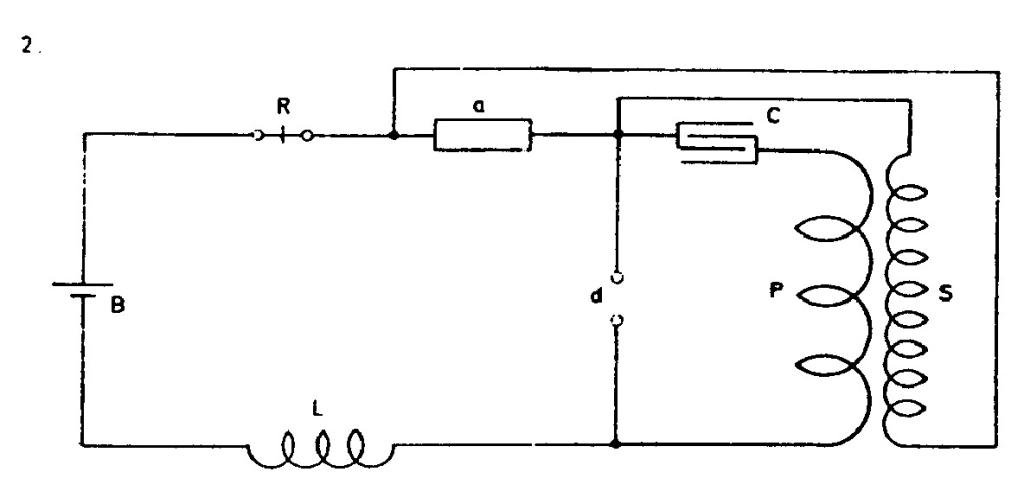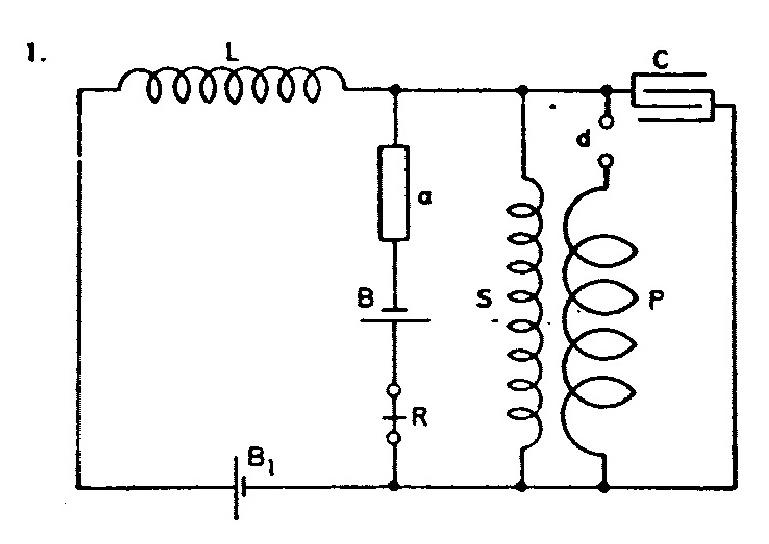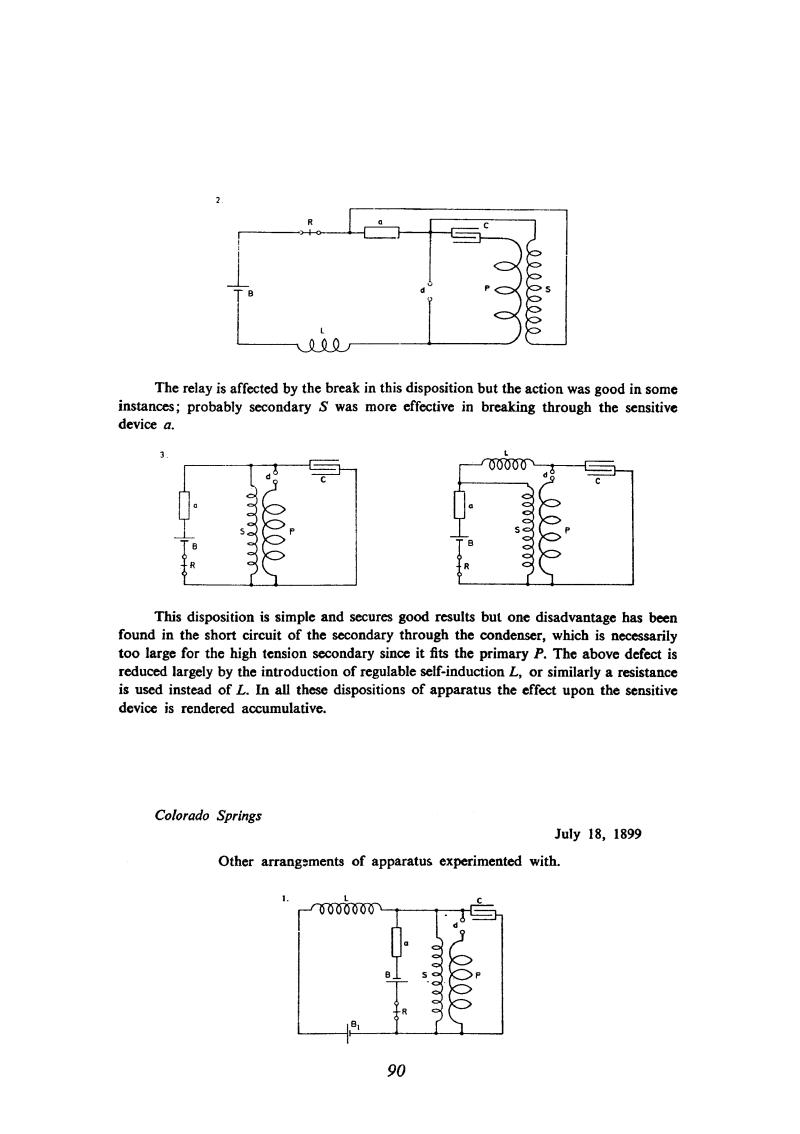
Nikola Tesla Books
The relay is affected by the break in this disposition but the action was good in some instances; probably secondary S was more effective in breaking through the sensitive device a.
This disposition is simple and secures good results but one disadvantage has been found in the short circuit of the secondary through the condenser, which is necessarily too large for the high tension secondary since it fits the primary P. The above defect is reduced largely by the introduction of regulable self-induction L, or similarly a resistance is used instead of L. In all these dispositions of apparatus the effect upon the sensitive device is rendered accumulative.
Colorado Springs
July 18, 1899
Other arrangements of apparatus experimented with.
90
July 17-18
This is a continuation of the work described in the entry of June 12th, with different combinations of the same components plus relay R for registering the signals received. In all the circuits the sensitive device has an accumulating function. He experimented with different modifications trying to optimize sensitivity and reliability. The circuit in Fig. 1 of July 18th has two batteries, and that Fig. 5 an autotransformer instead of the usual transformer with a primary and secondary.
July 17-18
This is the continuation of July 12 work with new schematics - new combinations of the same components along with the additional relay r. which serves for the purpose of received signals registration. In all circuits the effect on the sensitive device is accumulative. Various combinations with which he experimented represent attempts to find the best elements layout from the viewpoint of sensitivity and reliability. The circuit in Fig. 1, July 18, consists of two batteries, and that in Fig. 5, July 18, consists of an auto-transformer instead of the standard transformer with primary and secondary.




